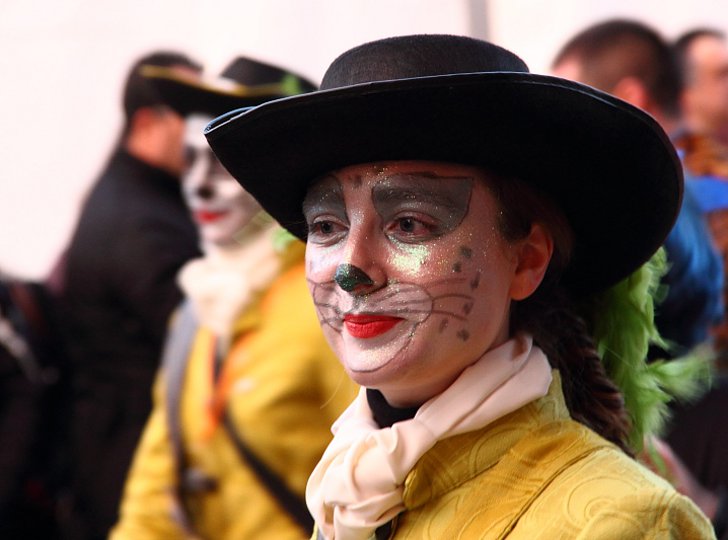The Carnival of La Bañeza began to gain importance during the period of Spanish history known as Francoist Spain. Francisco Franco prohibited concealing faces with masks or wearing costumes but people still celebrated carnivals as a sign of protest. Modern La Bañeza Carnival features plenty of costumed characters but there is no costume competition with prizes. Nevertheless most people prepare elaborate costumes and even dress up outside of Carnival events.
The Carnival of La Bañeza usually begins on the Thursday before Ash Wednesday. One the Carnival’s oldest groups, the Salsa Group, chooses and declares the muse of the Carnival. The official opening is followed by a number of performances.
Carnival Friday is known as Tranquilo Friday (Calm Friday). However, this doesn’t mean that there are no events. The second day of the Carnival was named after the group Los Tranquilos that hosts a traditional annual dinner followed by a party.
Carnival Saturday (Saturday of Sparks) begins in the early morning hours when many revelers perform spontaneous skits throughout the city and interact with tourists. In the afternoon downtown La Bañeza is filled with performers and costumed characters participating in a citywide street party.
The main highlight of Sunday is the Carnival Race. Although it is primarily designed for children, people of all ages can participate. In the afternoon, a replica of the previous year’s parade is held. Its participants wear the same costumes they wore last year and walk the same route.
Carnival Monday features the Children’s Parade, but the main event of the day starts at 12 am. Nochebruja is a whole night of partying that lasts until the wee hours of the morning.
Shrove Tuesday (Mardi Gras) it is the most important day of the Carnival. It features the Grand Parade led by the muse and the Salsa Group. It features numerous dancers and other performers accompanied by brass bands called charangas. The Queen Carnival and her maids of honor close the procession. After the parade, each participant is given a bun filled with chorizo (a type of pork sausage).
The Carnival ends on Ash Wednesday with the Burial of the Sardine. This ceremony marks the end of the festivities and the beginning of Lent.

Photo: javier arienza




